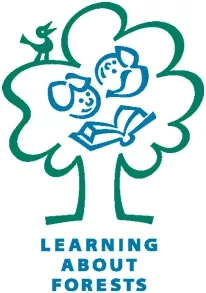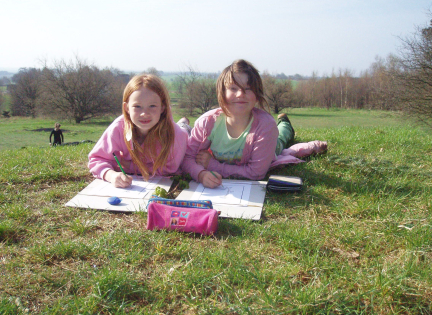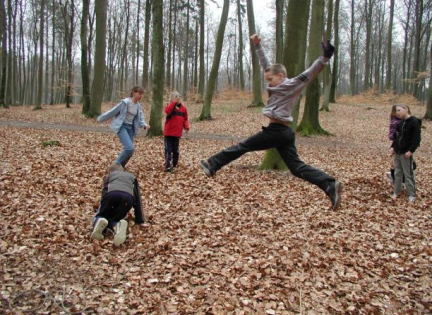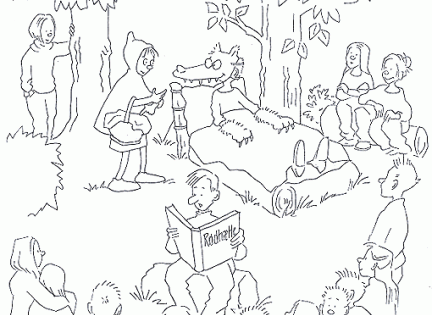International Exchange Project

Purposes
In brief, the project combines international contact and cultural exchange with experiences in forests and second language acquisition.
The purposes of this project are to exploit the opportunities of modern communication to develop friendly and inspiring contacts between pupils of different countries and cultures.
Forest is the thematic focal point of the exchange and the classes share information and experiences by giving each other assignments in local forests. English is your medium of communication - which is why the project is particularly useful in regard to language acquisition of pupils with English as their second language.
The purposes of this project are to encourage pupils to:
- Appreciate and value natural environments
- Share their knowledge and experiences with youth and children from other countries - and to establish positive cross-border relations
- Increase their knowledge about forests and environments in other countries
- Take part in the internationalisation of the world which is becoming an increasingly significant fact of their future and everyday lives
- (For pupils with English as their second languages) expand their English vocabulary and gain proficiency by using the language in practical situations
The project has been developed by the Danish school-forest project Skoven i Skolen. Skoven i Skolen is part of an international programme of co-operation called LEAF (Learning about Forests). LEAF is an affiliation of schools and forest projects from all over Europe - which keeps expanding and is soon to be joined by countries from other parts of the world. LEAF strives to increase children and young people's awareness of forest, wood, environmental issues and of all the functions and meanings that forests carry in social, cultural and economic respects.
Among other means, this awareness can be raised in the course of international exchange between pupils and teachers who swap and share information and experiences of forests across national and cultural borders. You can read more about LEAF at their website.
Preparation
First of all you find a foreign class which is interested in starting an exchange project and which is about the same age-level as yours. At the moment there are 12 participating countries in the LEAF network (Bulgaria, Cypress, Denmark, Finland, Greece, Ireland, Italy, Lithuania, Norway, Portugal, Sweden, Turkey). Among other countries, it is expected that England and South Africa will hook up soon.
You can find interested teachers and schools by contacting the international LEAF coordinator. You can also contact your national LEAF co-ordinator.
When you have established a contact with another teacher, you propose your suggestions as to how you get on with the exchange, in terms of what themes and tasks you imagine the exchange project should include, by what means the pupils should communicate, the duration of the project, and so on. The next pages provide you with frameworks and ideas which might inspire you and your foreign partner. You can use the recommendations as you please to shape your own exchange project. There is also a Danish version of the project suggestions at the website www.skoven-i-skolen.dk.
Before you and your partner start shaping the contents of the project, it is important to find out what technical options you have. Do both schools have computers and Internet or do you have to communicate through ordinary mail? Do both classes have access to photo and video equipment and will you be able to e-mail photos and recordings? Etc.
Make timetables for the various parts of the exchange in order that the exchange will run smoothly for both classes. Your timetables also depend on the technical options you have.
This Is How And What You Do
When you have established a contact with a foreign teacher and you have discussed and negotiated the frameworks and timetables of the exchange, you go on to the actual exchange between the two classes. First the two classes have to get to know each other. Each class presents itself to the other.
Advice: if you are working with very young classes, it is an excellent idea to ask older classes to be your pupils' technical consultants by the computers and language consultants - if your pupils are not native English speakers.
A) Presentation
It is important that the classes get to know each other well. The better the pupils know each other, the more engaging the project. Both teachers start the project by asking their pupils to prepare a presentation of themselves and their class.
The extent of presentation itself varies. You can include some or all of this list of information:
- A brief description of your country
- A brief description of your city or town
- A brief description of your school
- A detailed description of your class
- A description of each student and the teacher
Before you make the presentation you have to decide how you want to present yourselves. Is the class to be speaking, describing the individual pupils or should each pupil describe themselves or one of their classmates? Is the class to be divided into groups that get each their task of describing your country, town, school, etc.?
You also have to decide whether you want to supply your presentation with other elements than written texts. Do you want to send drawings and photos? Do you prefer to record the presentation on video or audiotape - or do you want to mix all these alternatives? The benefit of choosing other means than the written text is, for speakers of English as their second language, that you get your pupils to speak English. In order to enhance this purpose of the project, the class can make it a rule that they only speak in English when they are working on the project.
It is not necessary that the two classes present themselves in the same way. You only have to consider the difference between the two classes in technical capacity, so that you don't send videotapes to a class with no VCR.
Before you send anything off to the other class, you need e-mail addresses. Decide whether you want to make an address for the class as a whole or whether each group in the class - or each pupil - get their own e-mail address. You can also consider if you want to create a common web-site for the two classes - or a web-site for each class.
B) The Forest as Your Topic
The central topic of the exchange project is the forest and the two classes have to give each other assignments on forests and wood, in order that both classes learn about forests both in their own country and in the foreign country. Each class solves the assignments by gathering information and answers in the forest, at the library, on the Internet, etc.
Assignments may be copied from the forest projects that are continually being developed by the LEAF network. You can find them on LEAF's homepage (www.learningaboutforests.org) (Skoven i Skolen provides quite a number of projects, some of which have been translated to English. You can find them at the LEAF homepage). If you use these projects as assignments, the actual exchange consists of communicating the results of each project.
However, it is recommendable that the particular assignments relate to an overall theme of the exchange. Accordingly, a fine start is to make an introductory assignment, which shapes an overall perspective for the succeeding tasks.
The smaller tasks can start when you have specified the overall perspective.
Here are three examples of assignments that introduce overall themes. Ideas for further assignments have been included at the end of the theme:
- Forest and Ecology
- Forest, Society, Economy
- Forest and Culture
1. Theme: Forest and Ecology
Assignment
Describe a forest in your country.
Questions to get you started:
- What does an ordinary forest in your country look like?
- What animals are in the forest?
- What trees and plants?
- Are there any animals or plant in the forest which are unique to your country?
- How do you take care of forests in your country? How do you protect the forest from environmental damage and how are the animals protected?
You can split the class into groups and let each group provide different kinds of information. For example, different groups could take care of information on:
- Trees
- Predators
- Herbivores
- Decomposers
- Flowers and plants
- Food chains
- Ecological cycles
- Types of forest
- Other
Use drawings, poems, written texts in English, photos with texts, etc. to describe your forest to the other class.
Carry out research tasks on the Internet (you can use the LEAF network), the library and make trips to forests to get inspired.
When each class has received the other class' answer to the assignment, the exchange can continue by asking each other questions that arise when reading the respective sets of answers.
You may find inspiring forest projects related to forests and ecology on LEAF's homepage and on the respective homepages of the participating countries - i.e. this website.
2. Theme: Forest, Society and Economy
Assignment
How important is the role of forests in your national economy?
Questions to get you started:
- How much of your country is covered by forest - in per cent?
- How are forests important in your country? Forestry, Tree and wood industries, jobs, leisure, nature, ecology, environment… etc.
- How many people are employed in forests?
- Do you know anybody who works in a forest?
- What do they do?
- What products do you use which come from the forest?
- What kind of forest products are exported to other countries?
- Is there a tourist industry in your forests?
- How do you take care of forests in your country? How do you protect the forest from environmental damage and how are the animals protected?
Do your research on the Internet, on the library, in the forest and at wood factories, etc. You can start your research on LEAF's homepage. Scandinavian pupils may also want to visit the Leksikon.
You may find inspiring forest projects related to social and economic issues on LEAF's homepage and on the respective homepages of the participating countries.
3. Theme: Forest and Culture
Tell the story to the other class. You can write it, tape it or videotape it.
Your interpretation of the story may show in the way you choose to tell the story and in the illustrations you choose to make. There are several ways of telling and illustrating the story:
- The class tells and interprets the story with their own illustrations (you can take photos of yourselves dressed as the animals and characters in the story with beautiful background scenes or you can make your own drawings and paintings). Send the illustrations with the story and write a bit about the significance or popularity of the story in your country and a bit about the story's message.
- Tell the story to the other class and let it illustrate the story. The culture of the recipient will affect its understanding of the story. The results can be very surprising and inspiring. Afterwards you can exchange your different understandings of the story.
- A third way is to start out with the illustrations of a story. One class chooses a story and sends only its illustrations of the story to the other class (photos or drawings). Now the other class has to write the text to the illustrations. Afterwards the two classes compare the new text with the original story.
There is a large collection of myths, stories and fairytales about forests from all over the world at LEAF´s homepage under 'Themes', but you can also start your own story hunt.
You may also find inspiring cultural forest projects on LEAF's homepage and on the respective homepages of the participating countries.
Exchanging games and plays in the forest or starting rambling travelling stories are other ideas you may consider.
Background
Contact with children from other countries usually attracts the interest of pupils, which can be exploited in English classes.
Via international exchange with foreign schools, the teaching of English acquires an engaging and dynamic richness. Learning English becomes a matter of immediate and practical necessity. The pupils have ample opportunity to use English actively as a means of communication and through that to increase their confidence in speaking the language.
The exchange further combines the acquisition of language with social, cultural and economic relations, and given the central focus on the environment, the exchange fuses English instruction with the study of nature and forest.


